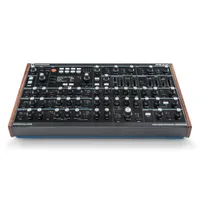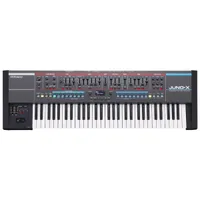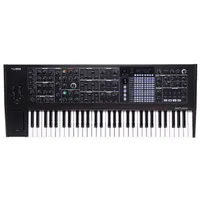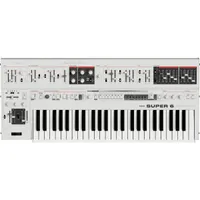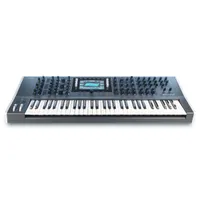Best synthesizers 2025: Top analogue, digital, mono and polysynths
From mini monosynths, through to mighty polyphonic workstations, our experts have hand-picked hardware synth recommendations for every budget
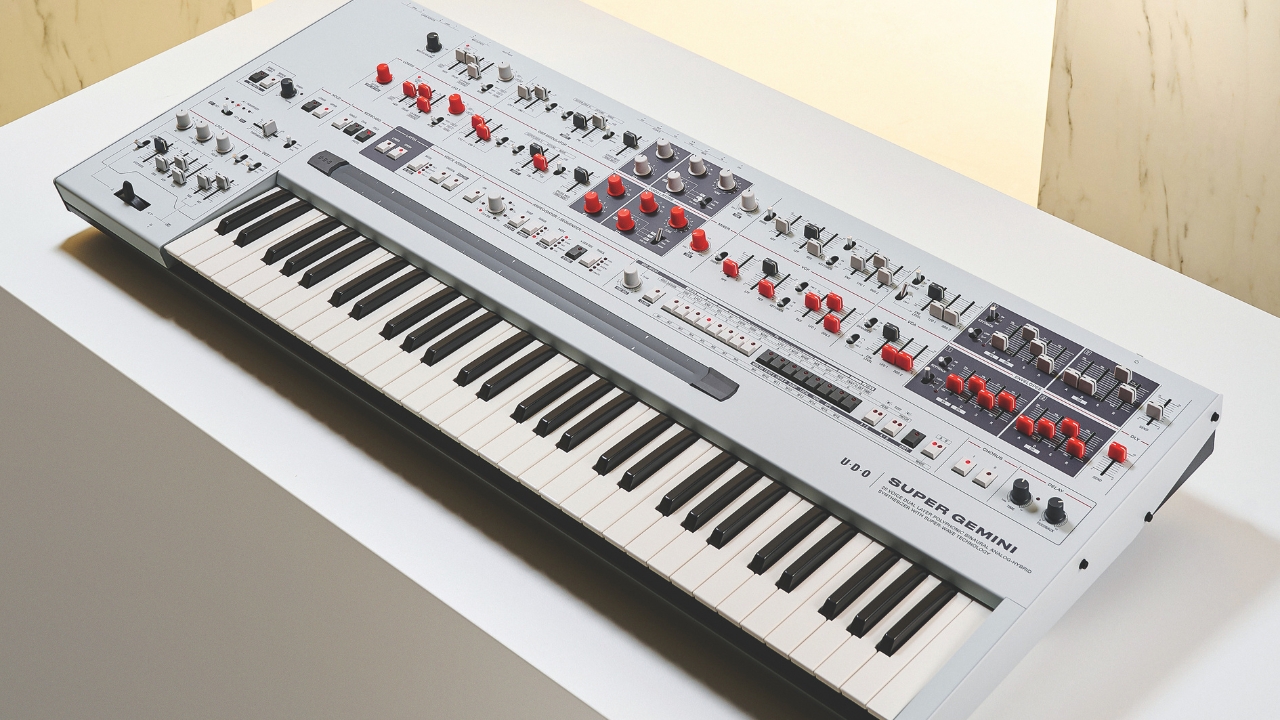
When it comes to choosing a hardware synthesizer, there is an almost overwhelming number of options available. That's why we've put together this in-depth guide to the best synthesizers available in 2024. Our experts have tested machines of all types and across all budgets, so you can home in on the ideal machine for your music production requirements.
It is truly a golden age for the hardware synth, after what was a pause in proceedings as software synths became dominant in the 2000s. Now producers have realised that having a hardware synth at the hub of their studio can give them a great sound, hands-on tweaking and a tactile interface that all combine to make producing music with a hardware synth an absolute joy.
There are a huge number of synth options, though. In this guide we have pure analogue synth recommendations across different budgets, and some incredible digital and hybrid models - very much the synths in vogue at the moment - capable of producing any sound you can imagine. Indeed there are so many hardware synthesizers available that we have had to be brutal in our recommendations, otherwise this would be one of the biggest buyer's guides on MusicRadar! But that means what our experts have recommended really are the best of the best.
For this guide, we've hand-picked a synthesizer recommendation in each of a dozen categories that should enable you to choose according to your use and budget. These are then followed by some more great synth choices that we’ve also tested. All of our summary reviews include links to more in-depth expert tests where appropriate.
Looking to make music gear savings this Black Friday? Shop our handpicked selection of the best Black Friday music deals and Black Friday keyboard, piano and synth deals.
Our top picks
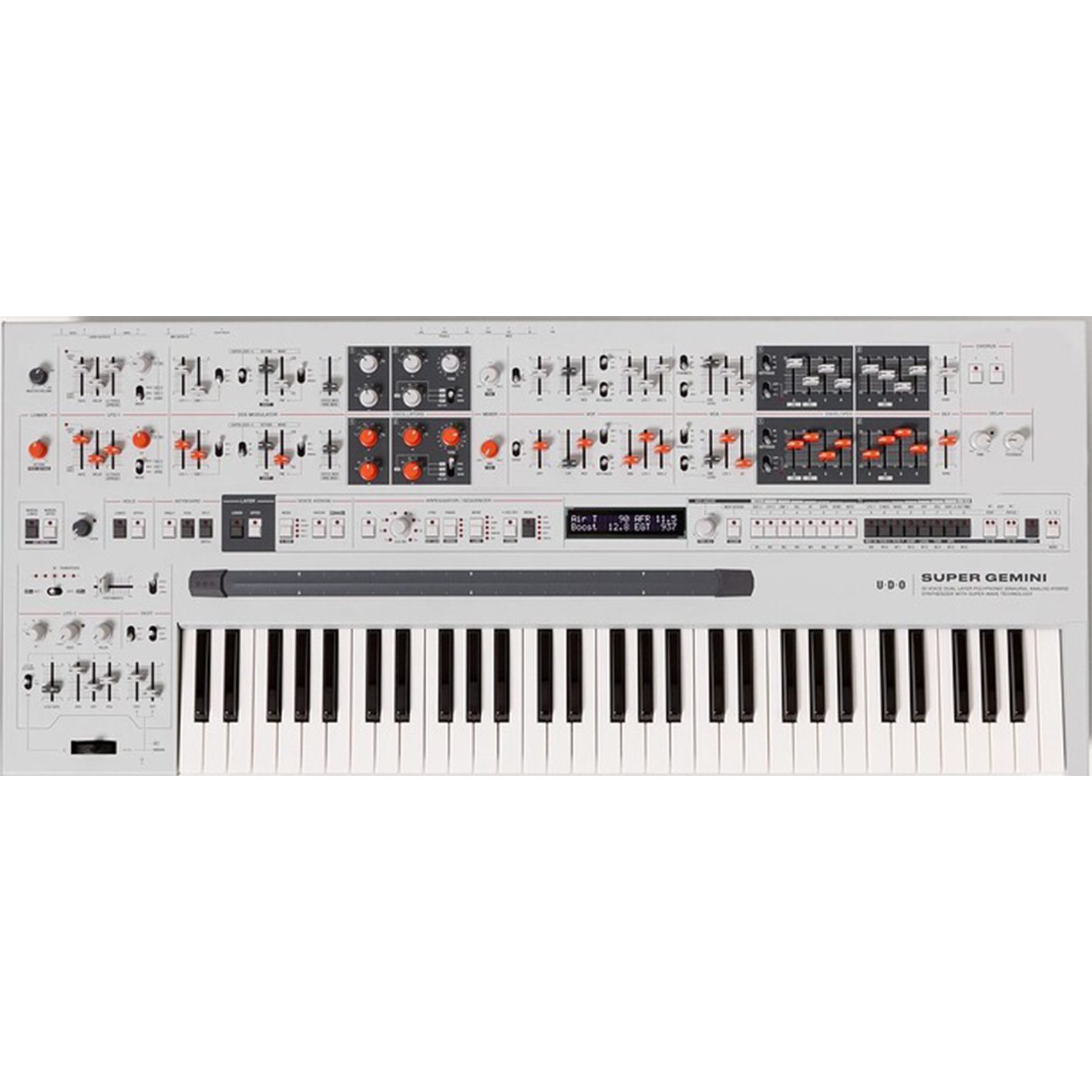
Super Gemini is two hybrid synths under one hood in as literal a sense as you could imagine. You get both synths, each complete with full controls, sitting on top of one another on the front panel, hence the large depth of the machine.
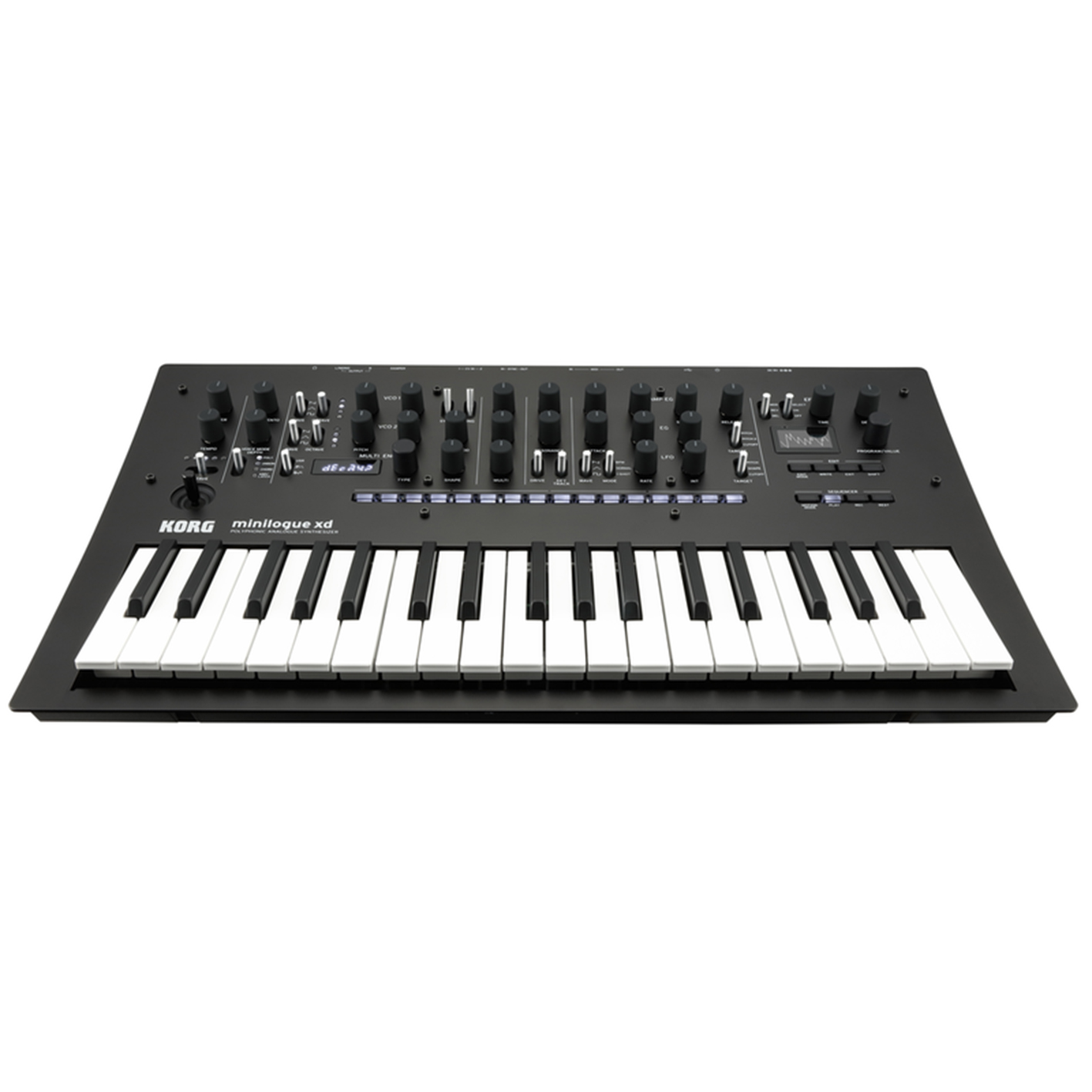
If you're looking for a first-time synthesizer, we highly recommend the Korg Minilogue XD thanks to its accessible user interface and great presets. It's also got plenty of depth to dive into once you're more confident.
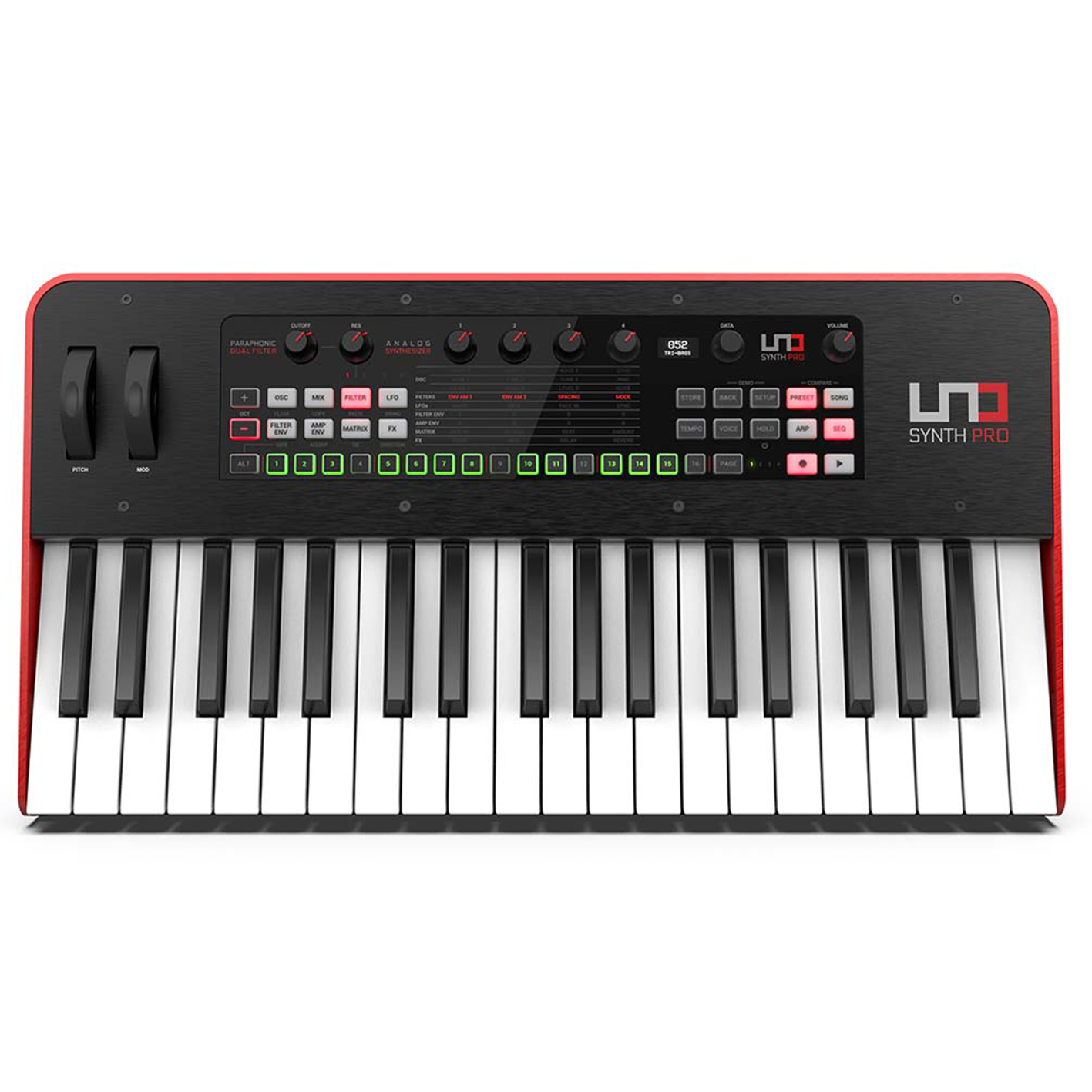
With a great sequencer and some fantastic effects, this is a great synth for the money with a really simple workflow. All in all, it is a fine instrument and one that definitely punches over its weight class, in terms of sound and functionality.
Best overall
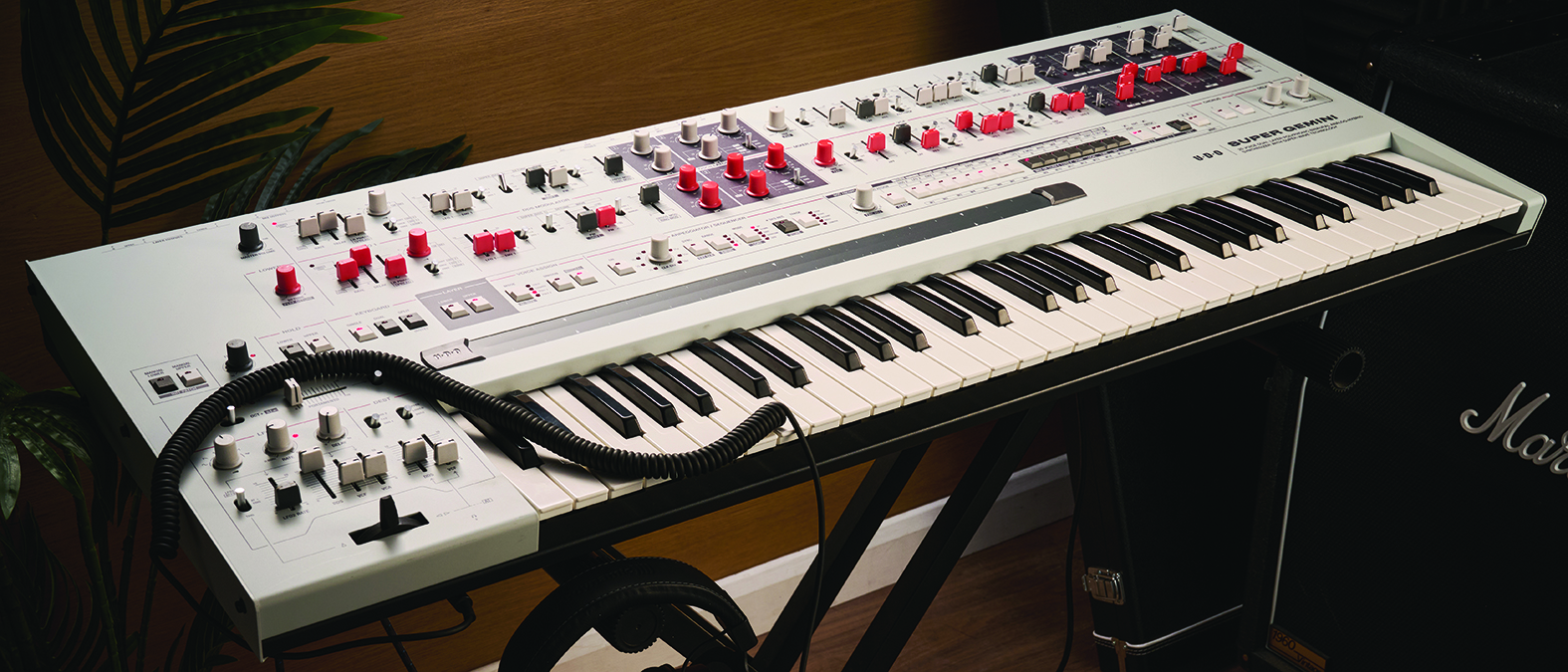
1. UDO Audio Super Gemini
Our expert review:
Specifications
Reasons to buy
Reasons to avoid
✅ Buy if you want huge depth and unique sounds: Comprising two hybrid synthesizers in one package, this is a super in-depth synth that can make some incredible sounds.
❌ Avoid if you're short on space: Fitting two synths in one makes it a pretty bulky package, so if you've got a small studio space you should look elsewhere.
Super Gemini is two hybrid synths under one hood in as literal a sense as you could imagine. You get both synths, each complete with full controls, sitting on top of one another on the front panel, hence the large depth of the machine - you'll need some space to fit the synth into your studio.
With those two synths included, Super Gemini is bi-timbral with up to 20 mono voices of polyphony, which you can share between the two synth 'layers'. You can also use the synth in binaural mode where two duplicate voices create true stereo sounds, but this halves the polyphony.
As impressive as these stats are, it's the interaction between the layers and the heaps of performance features that make Super Gemini so impressive. A Performance Control Section enables easy, hands-on modulation of several parameters, while a ribbon controller allows you to sweep sounds in a performance style evocative of that used by the mighty Yamaha CS-80.
Super Gemini won't be for everyone - its sound is dominated by atmosphere, arpeggiations, dreamy pads and beautiful renditions of acoustic-style instruments played on another planet. Hard-edged dance producers can get what they want with tweaking, but those after pure emulations of 'real' instruments need not apply, nor those with little cash. But for those dreaming of lush sounds and performing with them? Well. this could be one of your favourite synths of the 21st century.

"Gemini is not cheap, but like other polys including 3rd Wave (almost) in this price range, when you look at its specs and power, it’s hard to argue with the price. And when you play with all of these performance options, push the limits of its layering, morphing and polyphonic options, this synth can sound more beautiful than pretty much any other on the market."
Read more: UDO Audio Super Gemini review
Best synth for beginners
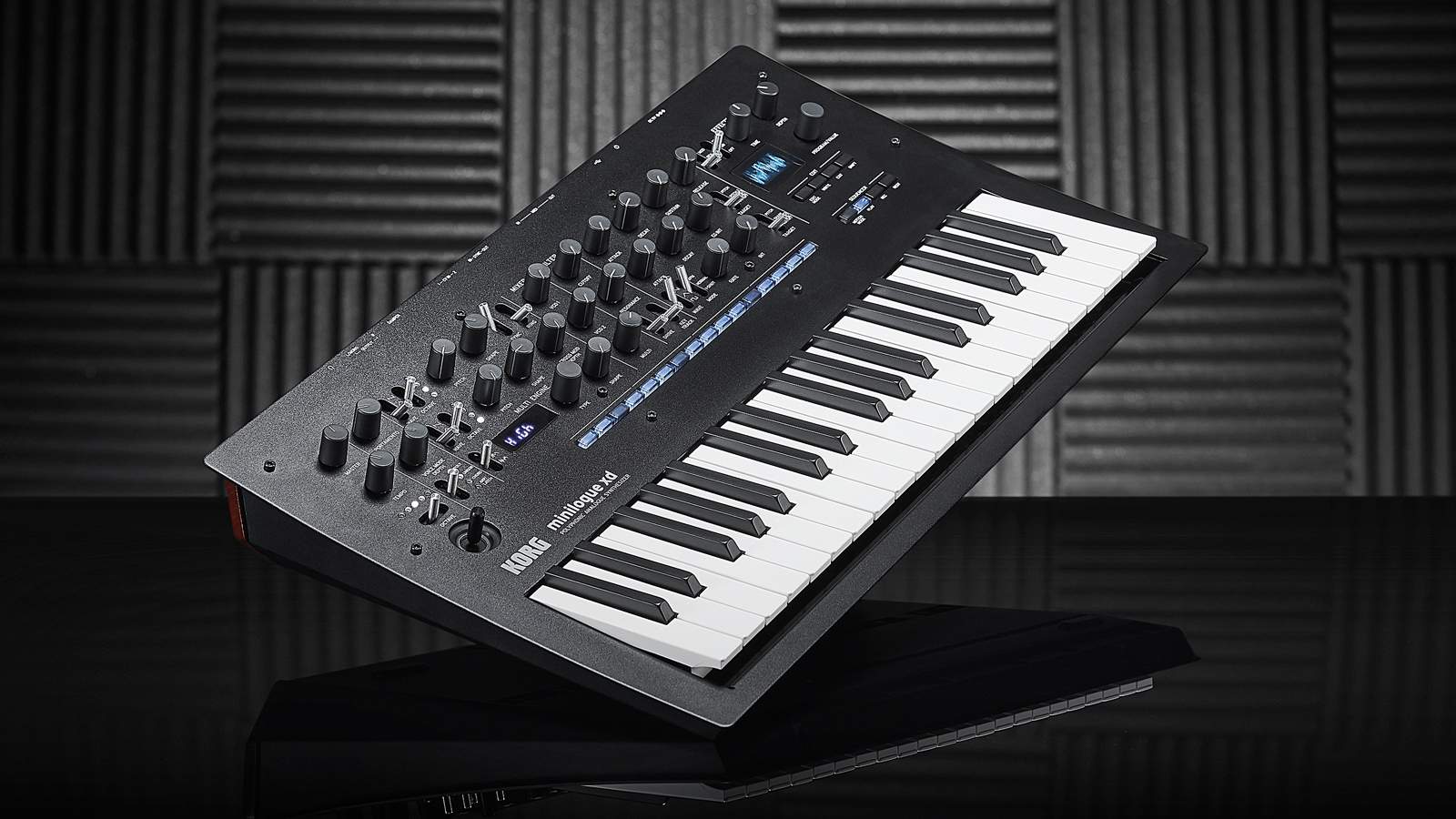
Specifications
Reasons to buy
Reasons to avoid
✅ Buy if you're a beginner: The user-friendly interface and great presets make it an excellent choice for beginners.
❌ Avoid if you want an original Minilogue: Some features present on the original Minilogue aren't available here, so look elsewhere if you want that vintage experience.
Getting started with synthesizers can be a daunting task, with so many different terms to learn, knobs to tweak, and buttons to press you can easily get overwhelmed coming into it without any prior knowledge.
For us, the Korg Minilogue XD nicely straddles the line between accessibility, while still offering enough depth for you to really get stuck in once you've learned more. Everything is laid out in a really clear fashion, and an excellent selection of presets to get your started on your sound design journey.
If we had to choose between this and the original Minilogue, it’d be the XD due to its more powerful sequencer, extended general versatility, user-customisable Multi-Engine/effects, the joystick for real-time control, user scales/tunings, more inspiring vibe and excellent motion-sequenceable stereo effects/output.

"Along with the new damper pedal jack and dual-CV inputs (to interface with modular gear), the XD is a nicely different flavour of Minilogue, and its unique personality is a hugely welcome addition to the range as a whole."
Read more: Korg Minilogue XD review
Best budget synth
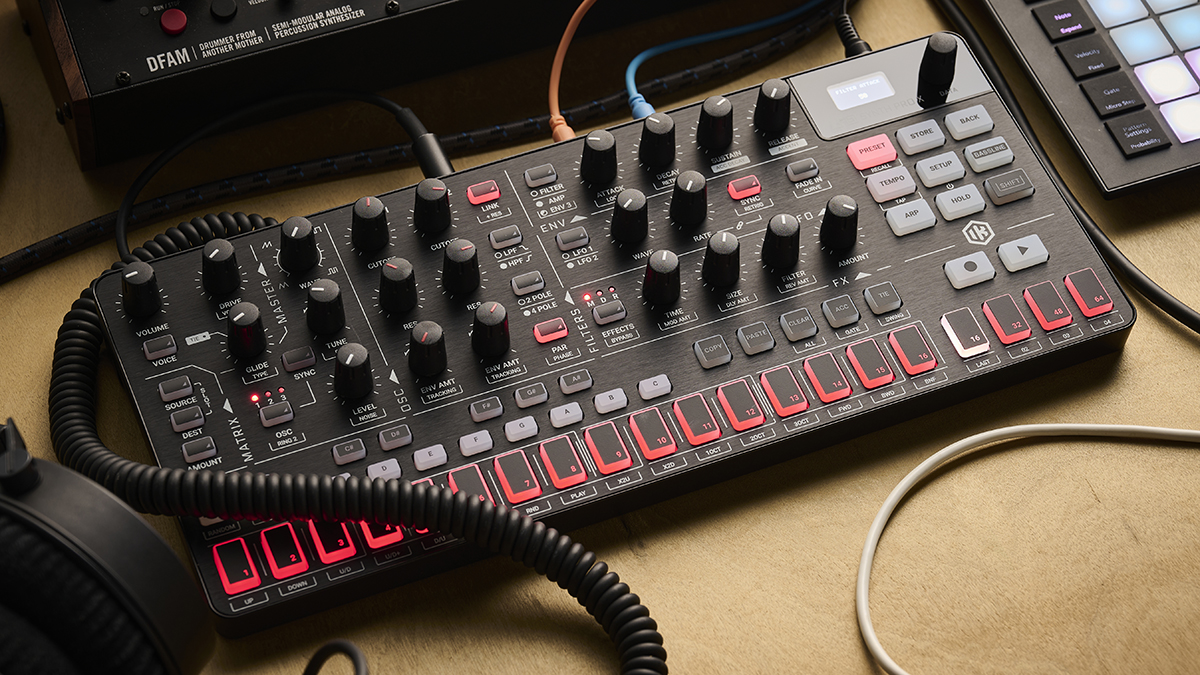
Specifications
Reasons to buy
Reasons to avoid
✅ Buy if you're on a budget: Synths are typically very expensive, which makes the Uno Synth Pro a great choice for the cash-strapped synth player.
❌ Avoid if you don't like menu diving: Due to its small size you'll need to dive into menus to make the most of the functionality here.
UNO Synth Pro is an analogue synth, very much the big brother of the UNO Synth. It is available as a full-size and much more expensive keyboard version or a desktop unit with touch keys. The keyboard version is obviously larger, sporting a heavy-duty metal enclosure, as well as physical wheels for pitch and mod. Those differences – and the keyboard version’s power socket – aside, the two are identical.
UNO Synth Pro sports three analogue VCOs and a white noise generator, all with some great tone-shaping options. Each of the three oscillators has continuous wave shape variations from saw to pulse width, with modulation. There are two analogue state variable filters, with dedicated cutoff and resonance controls.
The potentiometers all feel smooth and firm, with a nice amount of resistance and, while the filter controls are dedicated, the function of most changes is dependent on the active menu. There is also a fantastic modulation matrix, which is a doddle to use; fast and powerful, belying its appearance.
With a great sequencer and some fantastic effects – although not many of them – this is a great synth for the money with a really simple workflow. All in all, it is a fine instrument and one that definitely punches over its weight class, in terms of sound and functionality.

"All in all, this is a great instrument and one that definitely punches over its weight class, in terms of sound and functionality. When first seeing photos of these we thought they’d feel more akin to playing a plugin but the reality is far from that."
Read more: IK Multimedia Uno Synth Pro review
Best synth bass
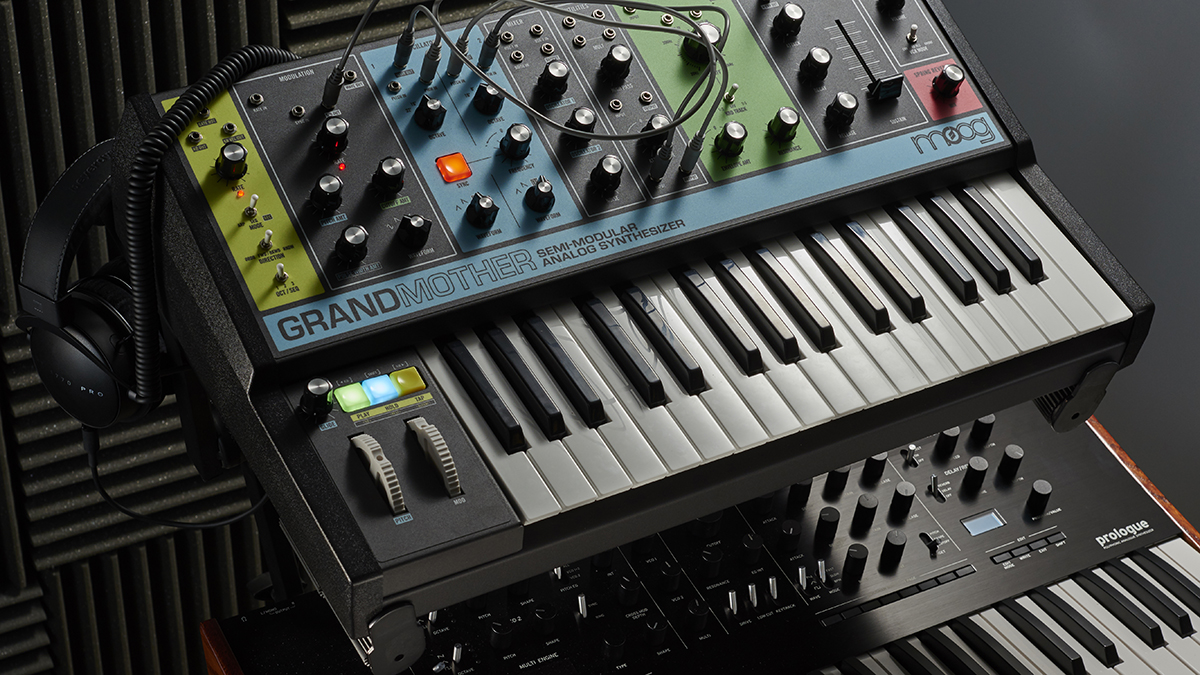
Specifications
Reasons to buy
Reasons to avoid
✅ Buy if you want huge bass sounds: Pretty much any synth can do great bass tones, but we love the performance-focused nature of the Grandmother.
❌ Avoid if you want polyphony: This is a mono synth, which means you can only play one note at a time so if you want chords, you'll need to look elsewhere.
Moog’s latest semi-modular comes equipped with a 32-note Fatar keyboard, sequencer and arp, making it more performance-focussed than its siblings in the Mother line.
It has a chic multi-coloured retro design that suits its authentic vintage sound. The old-school approach is rounded off nicely with the inclusion of a spring reverb module – a rare inclusion in modern synths.
Grandmother is a versatile performer, capable of a vast range of sounds even before patching a cable. Is it worth the asking price? Absolutely, if for no other reason than providing users with a taste of those old Moog modular circuits without having to take out a second mortgage.

"Is it worth the asking price? Absolutely, if for no other reason than providing users with a taste of those old Moog modular circuits without having to take out a second mortgage. If you pieced together a similar collection of cloned Moog modules, you'd pay more, and you'd still have to pony up for a high-quality keyboard. Here, you get the goods from Moog itself, and many other features besides."
Read more: Moog Grandmother review
Best analogue synth
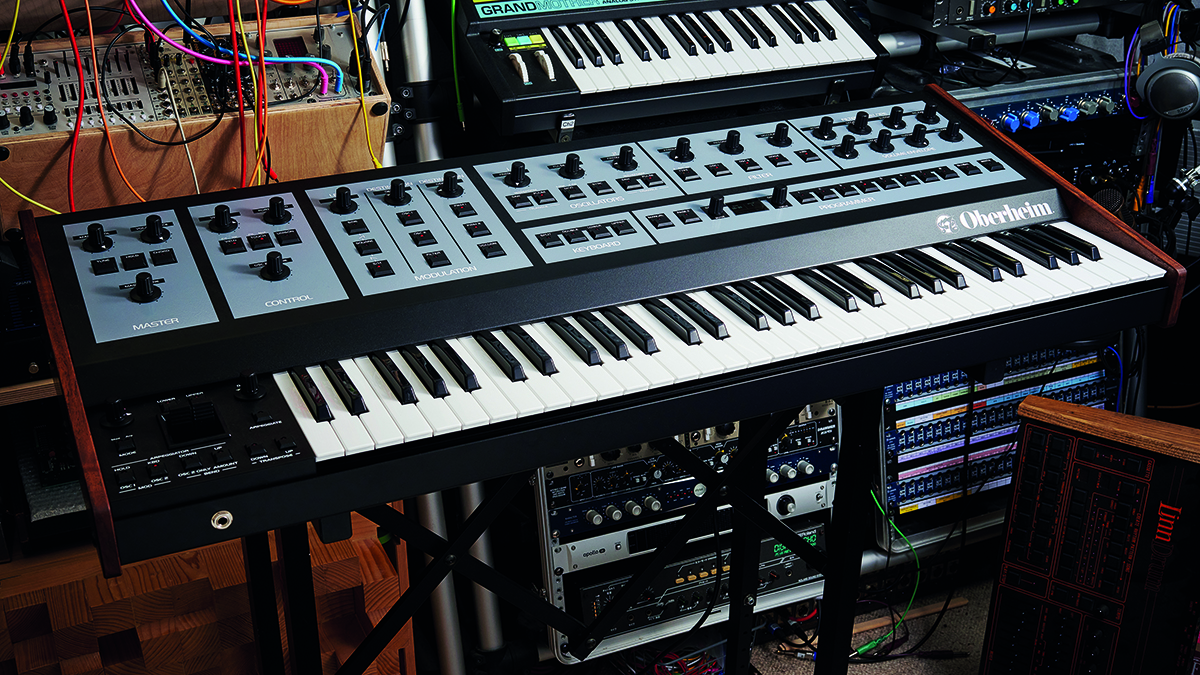
Specifications
Reasons to buy
Reasons to avoid
✅ Buy if you want analogue synth sounds: Taking the best of some classic Oberheim synths, the OB-X8 is our top choice for those seeking analogue synth sounds.
❌ Avoid if you're on a budget: This is a premium-level synthesizer, so look elsewhere if you're on a tight budget.
The OB-X8 takes the best bits of the OB-X, OB-Xa and OB-8 - manufactured between 1979 and 1985 - and packs them into a new eight-voice analogue synth. You also get all the presets from those OB classics, but the OB-X8 is more than just the sum of these excellent parts.
You get two discrete EM/OB-X-lineage VCOs per voice (sine, saw, square, triangle and noise) for that classic Oberheim tone, along with genuine Curtis filters. The 61-note Fatar keyboard is velocity- and touch-sensitive for maximum expression, and bi-timbrality enables you to use two presets for splitting or doubling.
Real walnut end cheeks add to the vintage look, while the high-res OLED display is a practical nod to modernity. Further enhancements include additional SEM filter modes that add high-pass, band-pass and notch functions to the classic OB-X filter, while a vintage knob is reported to enable you to dial in adjustable amounts of voice-to-voice variability, emulating the behaviour of vintage instruments.
Want more? How about an enhanced unison option that enables up to eight voices of variable voice stacking, variable triangle wave cross-modulation, programmable per-voice panning and variable oscillator and noise levels.
The OB-X8 is a beautiful synth that's destined to become a classic in its own right. If you can afford it, you'll find it to be truly inspiring.

"It is lovely to use and play. We found it easy to program all the sounds we used to create on our OB-8 and it has that vintage Oberheim sound in abundance. This is a beautiful synth and destined to be a classic in its own right."
Read more: Oberheim OB-X8 review
Best ambient synth
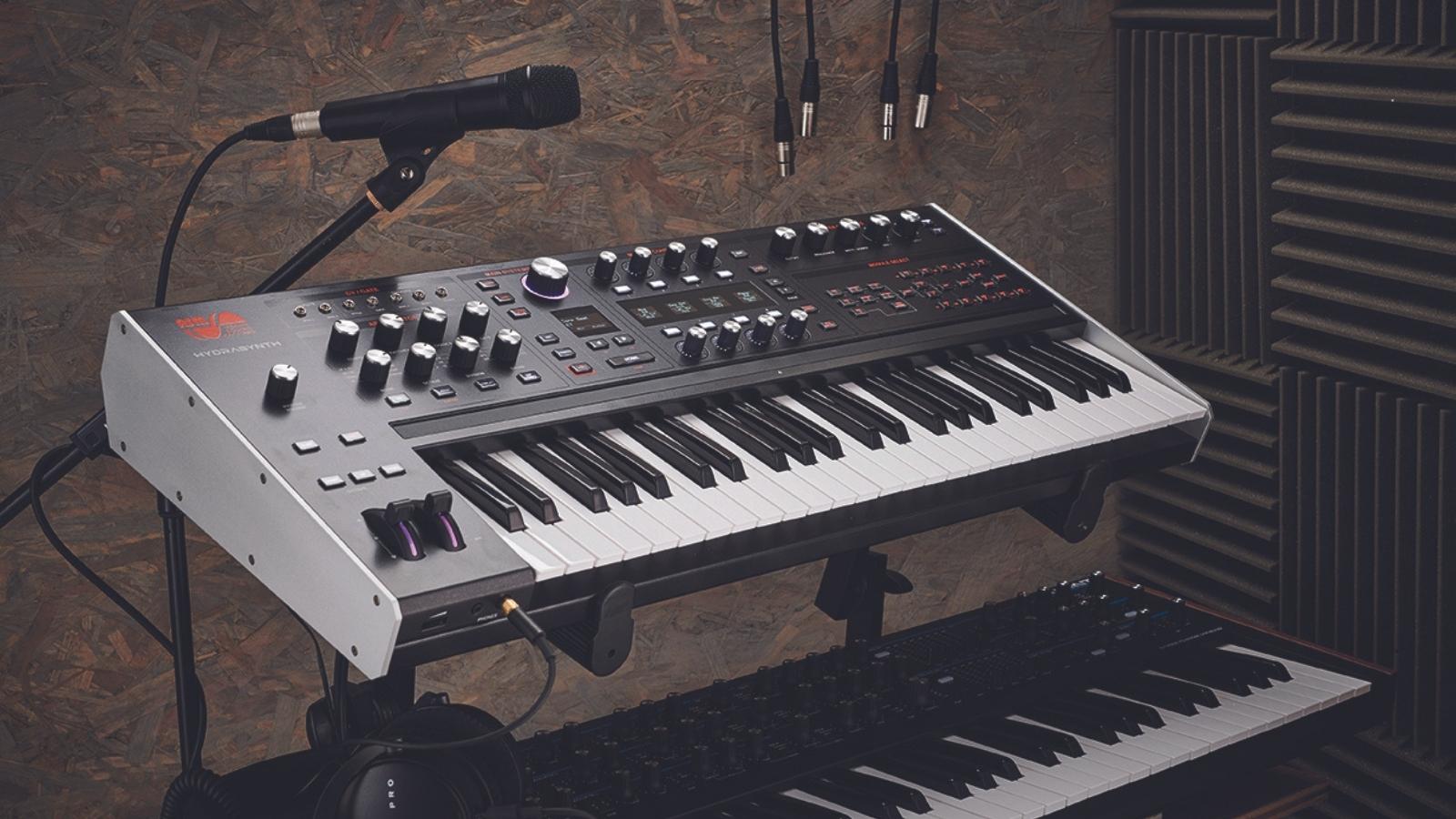
Specifications
Reasons to buy
Reasons to avoid
✅ Buy if you want ambient synth sounds: Again, most synths can do ambient in conjunction with an effects pedal, but the built-in effects here offer that natively.
❌ Avoid if you value simplicity: There's a lot of depth to this synth, so it's probably not the best choice if you're buying for the first time.
Hydrasynth is an unconventional digital synth that uses ‘wave morphing’ at its core. You have eight voices of polyphony utilising three oscillators per voice which include standard waves, plus wave-scanning, an intuitive type of wavetable synthesis where you can assign eight waves and then scan through them using a dial/mod route. Add in five (looping) envelopes per-voice, an amp module, two filter modules, five LFOs, reverb and delay modules, plus pre and post effects, and you have everything you need in terms of sound design, and all directly accessible and mostly modulatable!
The general sound quality is truly excellent. It can be precise and crisp, warm and textured, with everything from high-quality ‘bread and butter’ sounds, to something truly unique and never heard before. Once you factor in the ribbon controller, arpeggiator, macros, mod routes – and poly aftertouch – and all the very musical sounding effects/drive, you’ll be discovering new sounds in super quick time.
There is something of a learning curve but remember we are dealing with a lot of complexity – Hydrasynth is a deep synth and hugely impressive. In terms of build quality, looks, features, sound – not to mention affordability – Hydrasynth has it all.

"As a debut synth from a new company, the Hydra is hugely impressive. This is not easy to achieve on the first throw! In terms of build quality, looks, features, sound – not to mention affordability – the Hydrasynth has it all. There's also a very nice rackmountable/desktop version too, with the same feature set but with pads instead of keys. ASM deserve congratulations on a brilliant machine!"
Read more: ASM Hydrasynth review
Best mini synth
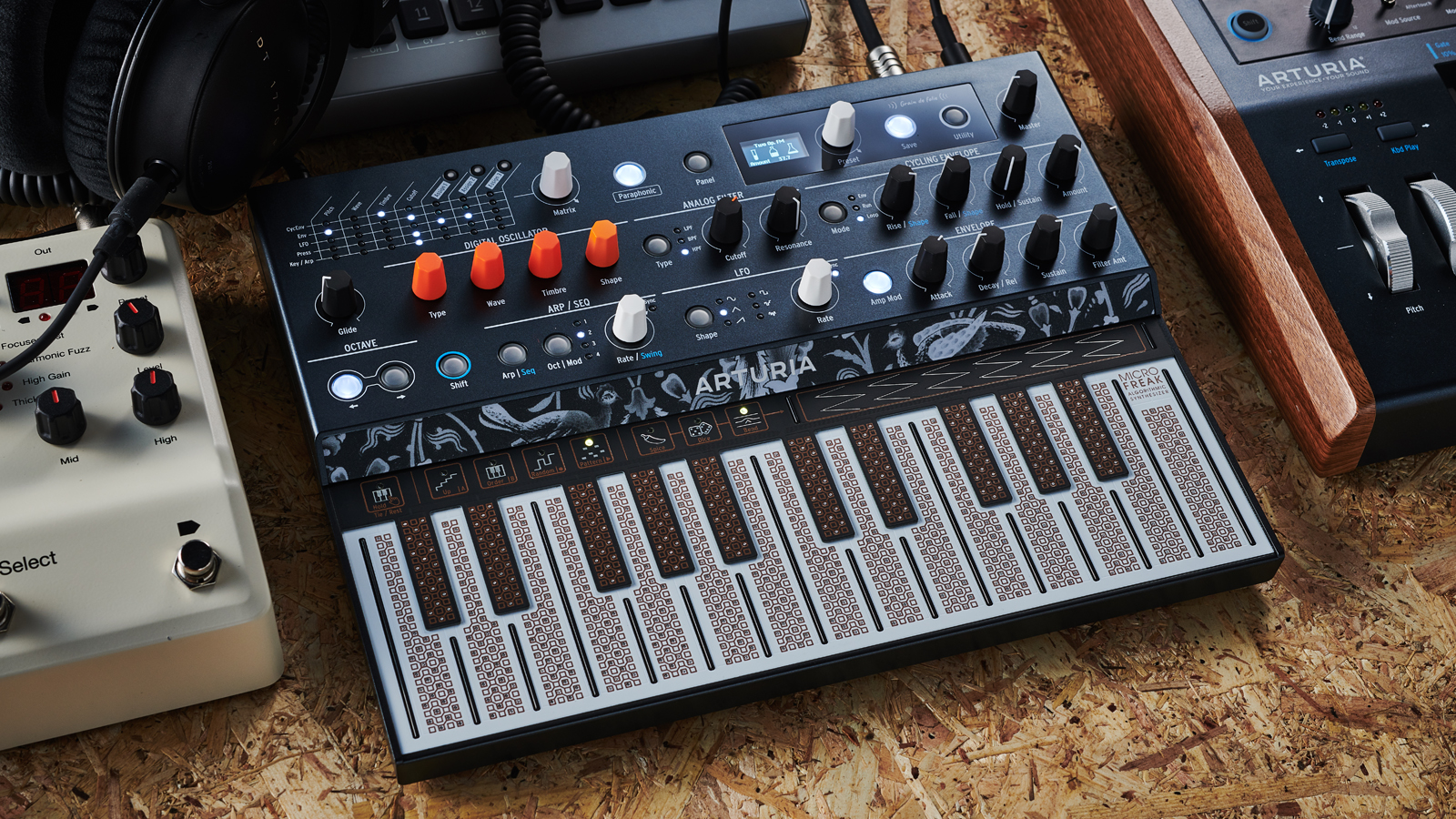
Specifications
Reasons to buy
Reasons to avoid
✅ Buy if you want a small synthesizer: The tiny size of the MicroFreak makes it the natural choice for those who are tight on studio space.
❌ Avoid if you don't have effects: We found the sound of this to be a little too clean for our tastes, so it's best paired with external FX.
With so many synthesis features packed into such a small box, it’s hard not to fall in love with this hardware offering from Arturia. We found that the multiple oscillator modes cover a near-endless range of timbres; the filter is smooth and versatile; the Matrix invites exploratory modulation; and the performance and sequencing tools are the icing on the creative cake.
We love the OLED display too, which gives you info on preset names, waveshape changes, filter sweeps, and loads more. It's a great addition to a tiny synth that makes it much more engaging to program your settings.
However, the real magic lies in the combo of all these together, making this odd little beast far more than the sum of its parts. MicroFreak should be top of your ‘must try’ list if your studio is already packed to bursting.

"With so many synthesis features packed into such a small box, it’s hard not to fall in love with Arturia’s latest hardware offering. The multiple oscillator modes cover a near-endless range of timbres; the filter is smooth and versatile; the Matrix invites exploratory modulation; and the performance and sequencing tools are the icing on the creative cake."
Read more: Arturia MicroFreak review
Best synth under $1,000/£1,000
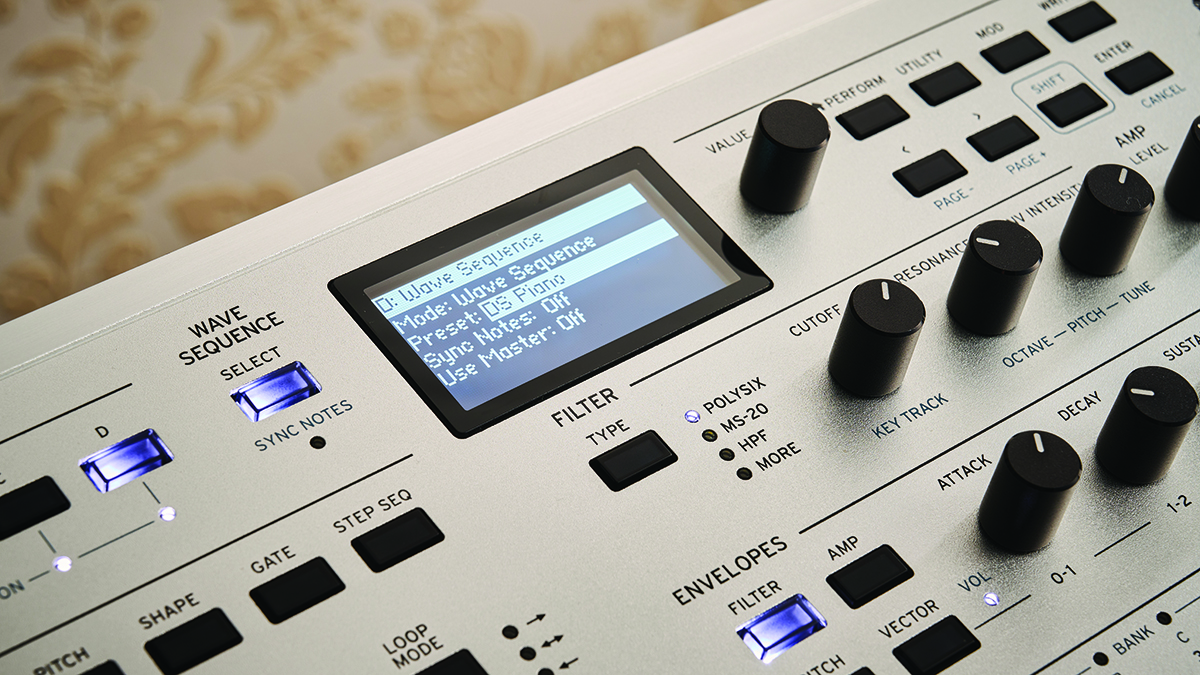
Specifications
Reasons to buy
Reasons to avoid
✅ Buy if you're on a budget of $/£1,000: Coming in below a grand, this wavetable synthesizer is a fantastic choice for sound designers.
❌ Avoid if you need aftertouch: The Wavestate doesn't have aftertouch, so look elsewhere if you need that feature.
In the 1990s, wavetable synthesis fueled the dance and electronic music fire, delivering an intuitive way of accessing a wide variety of sounds within a single patch. It was unparalleled in its creative potential for sound designers and experimental producers. As one of the pioneers of this synthesis method, Korg has now reintroduced it to the world with the Wavestate.
The MKII version sees an update from 64 stereo voice polyphony to a huge 96 voices, further adding to the insane level of sequencing potential It really is one of the most diverse-sounding modern synths on the market.
Additional factory presets and more memory further add to the MKII's feature list, but in terms of everything else, it's exactly the same as the original. In our tests, we did find that taking full advantage of the features, requires some effort but if you’re willing to put the work in there isn’t much the Wavestate can’t do.

"Taken as a whole, the Wavestate is an excellent instrument. Korg has done a fantastic job of walking the line between being faithful to a classic and offering something new. Sonically, the synth nails what Wavestation fans expect – even just as a preset machine, this is an awesome source of rich, pulsating pads, oddball textures and powerful multi-timbral patches."
Read more: Korg Wavestate review
Best synth under $500/£500
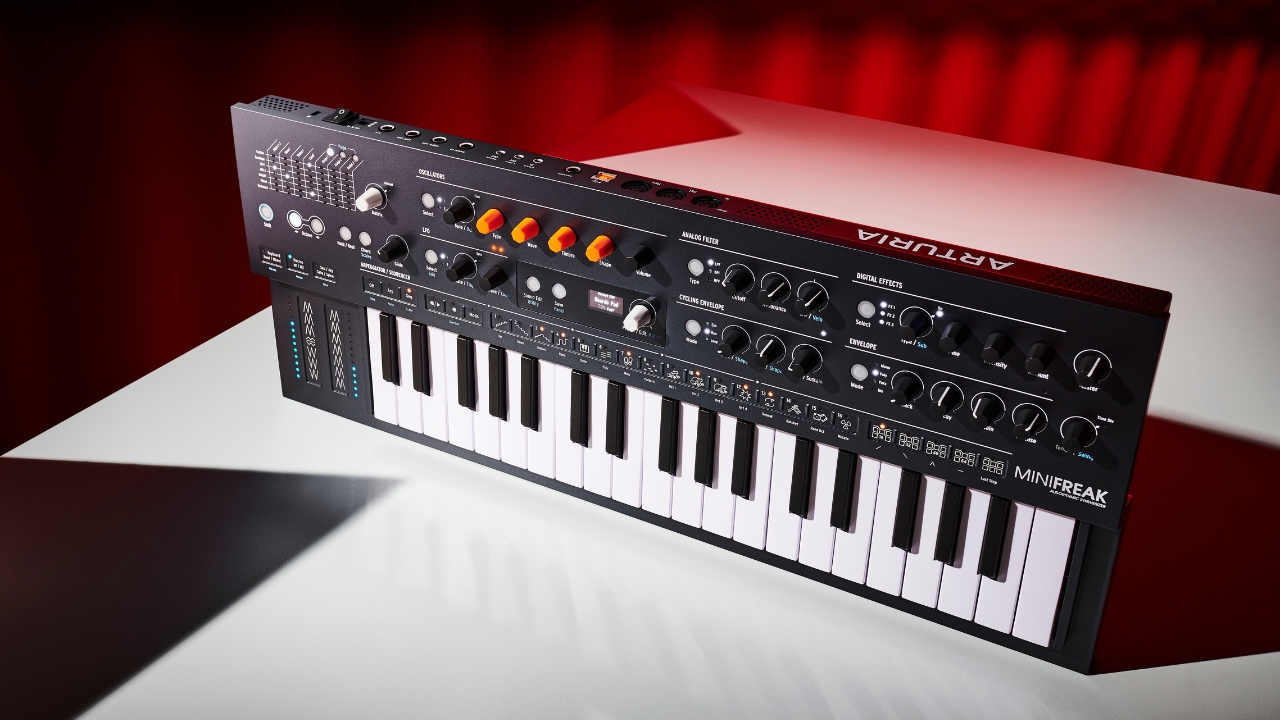
Specifications
Reasons to buy
Reasons to avoid
✅ Buy if you're on a budget of $/£500: There are a lot of options in the MiniFreak, which makes it a great choice for those on a budget of $/£500 or below.
❌ Avoid if you need depth: This doesn't have as much depth as some of the other synths on this list, so you might want to look elsewhere if you need a lot of features.
Picking up where the paraphonic MicroFreak left off, MiniFreak is a polyphonic hybrid synth that offers six voices, two sound engines, a 37-note slim keyboard, built-in stereo effects and both modulation and sequencing features aplenty. It also comes with a like-for-like plugin instrument, MiniFreak V, for free (this is available to purchase separately, too).
The twin digital sound engines can operate in more than 20 different modes. You can use these engines individually, stacked, or to process each other’s output for “unique compound sonic behaviour”. The resulting sounds are then run through analogue filters. You can use MiniFreak as a 6-voice polyphonic synth, a 12-voice paraphonic one, or in monophonic or unison configurations.
Further sound design takes place in the modulation matrix, which offers the likes of polyphonic ADSR envelopes, customisable multi-segment LFO shapes, FM & ring modulation, and ‘Spice & Dice’ randomisation. There are stereo outputs and three digital effect slots that you can fill with a choice of 10 FX types. These include chorus, three-band EQ and distortion.

"The joy of working with MiniFreak is that it keeps its most exciting features up front, meaning it’s incredibly easy to experiment with oscillator combinations, modulation routings and effects without getting lost in sub-menus. For all of its versatility too, Arturia has done an excellent job of creating a UI that feels like it has no wrong answers; even if you’re not interested in exploring the nuances of oscillator types, getting stuck in tends to consistently create winning results."
Read more: Arturia MiniFreak review
Best FM synth
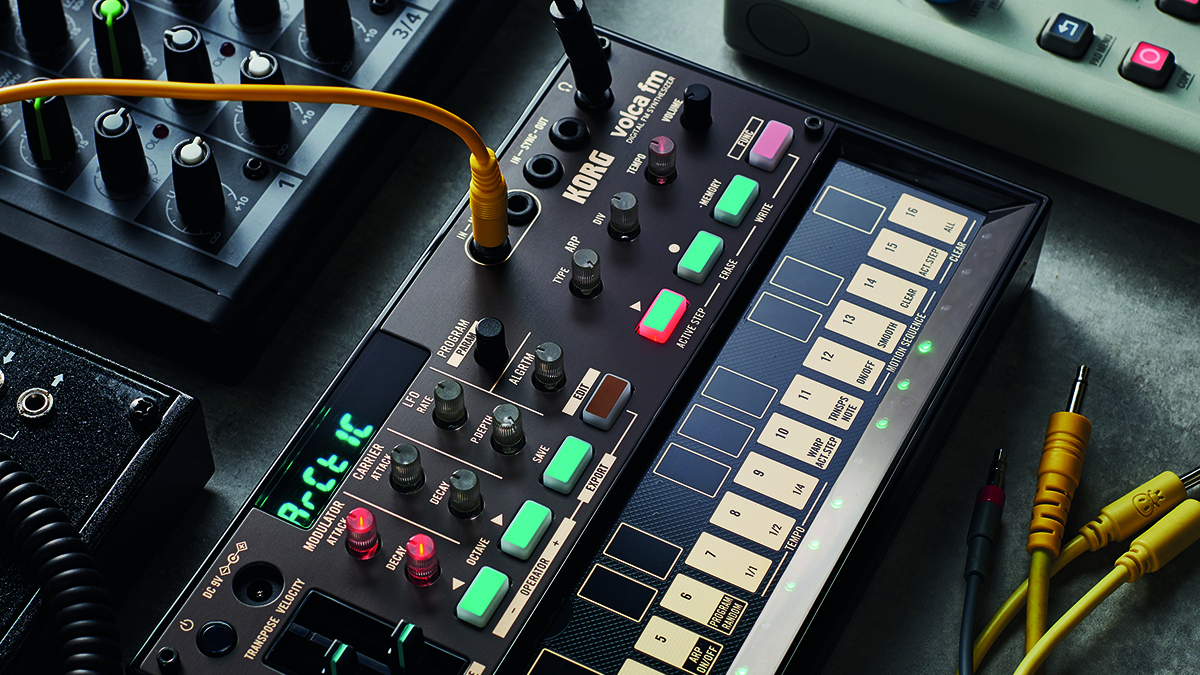
Specifications
Reasons to buy
Reasons to avoid
✅ Buy if you want a compact FM synth: Keeping all the vibe of the original, the Korg Volca FM2 delivers classic sounds with plenty of new features.
❌ Avoid if you need built-in effects: It does have a built-in reverb and chorus, but these are pretty simple affairs without much scope for tweaking.
The original Volca FM was a compact, battery-powerable instrument, housed in a plastic chassis with a design that gave a cheeky stylistic nod to the Yamaha DX7 from which it took its sonic cues. The FM2 takes everything that was great about the original and adds to it, improving this awesome little synth in almost every way.
Where the other Volca models have merely captured the general vibe of the instruments they took their inspiration from - albeit in a very fun and affordable way - the FM manages not only to nail the sound of its spiritual predecessor the DX7 but also adds an assortment of new and powerful features.
The polyphony has been doubled from the previous version, from three to six voices and we're huge fans of the new reverb effect to go alongside the original chorus. The sound of those dark, percussive basses, icy mallets, and '80s-style horns is bang on, and if you start to push the capabilities of this tweakable, hands-on little synth, you'll find it's capable of some truly unique tricks.

"Aside from the disappointing lack of MIDI adapters, this is an all-round excellent update. The Volca FM was already a favourite of ours and this refresh enhances it in some major ways. There are more powerful and versatile FM synths on the market, but this is an unmissable source of retro digital tones at a great price."
Read more: Korg Volca FM2 review
Best poly synth
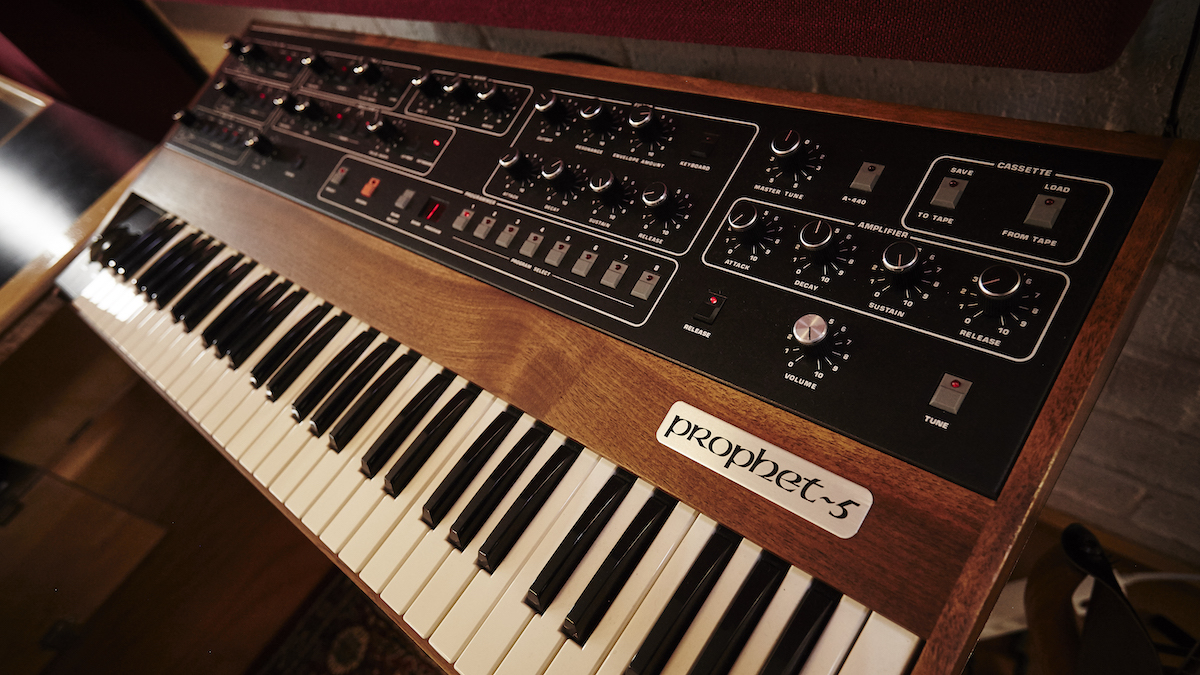
Specifications
Reasons to buy
Reasons to avoid
✅ Buy if you want classic poly synth sounds: Based on all-time great, this synth delivers classic tones aplenty.
❌ Avoid if you want to gig: This is an incredibly expensive bit of kit, so if you're looking to gig we would go for something else.
The original three versions of Sequential’s Prophet-5 synth left their mark on so much music throughout the late 70s and early 80s, and were bought by luminaries including Jean-Michel Jarre, Pink Floyd, Abba and Genesis. It was a legendary synth and now it’s back, a new update from original designer Dave Smith.
This fourth revision of the Prophet-5 synth comes almost 40 years after the last. All you really need to know is that this is a classic synth updated for the 21st Century – the keyboard has aftertouch and velocity; connections include USB. Other than that, it sounds every bit as good as an original Prophet-5. It’s a beautiful synth, both in looks and sound and every bit as classic a modern piece of kit you could ask for.
Outstanding features include some excellent presets (including the original set of sounds found on the 1978 original Rev1), the brilliant Poly-Mod section that gives you instant sound design, plus a build quality that will have you drooling. It’s a serious piece of kit that perfectly updates a classic for 2021. Your only quandary should be whether you go for the extra five voices that the (also all-new) Prophet-10 gives you (for around another £6-800) or even Sequential’s own Prophet-6 which gives you more for less (but is not a Prophet-5!). This is a classic synth reborn.

"Three grand plus is a lot for any synth and there are lots of cheaper polysynths better suited to more contemporary styles, with better specs. However, the Prophet-5 is a legend for a reason and this Rev4 is simply that legend made better. The best incarnation and easily adds enough to bring it into the future. Other options cost less… but they’re not a Prophet-5, are they?"
Read more: Sequential Prophet-5 Rev 4 review
Best wavetable synth
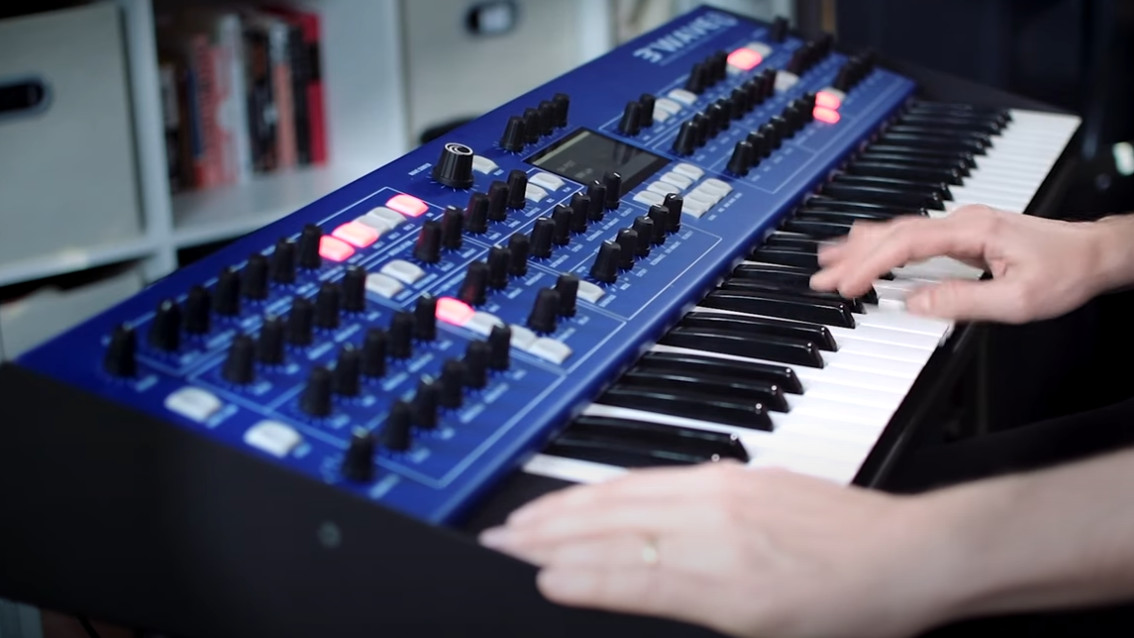
Specifications
Reasons to buy
Reasons to avoid
✅ Buy if you want something easy to use: We love the combination of ease of use with plenty of power behind it the 3rd Wave offers.
❌ Avoid if you're on a budget: It's a pretty expensive synth, although you can save some money by buying the module version.
The original PPG synth developed by Wolfgang Palm back in the '80s was one of the most influential ever created. 3rd Wave is essentially what that synth could have been had it reached version 3, but is packed with features and sounds straight from the 2020s.
3rd Wave's wavetable engine is based on the original PPG Wave, but two other engines deliver a new set of 96kHz wavetables and a set of 'analogue' wavetables. It's wavetable old, wavetable new and analogue, then! But it gets better, as these engines are fed into an architecture that delivers a mighty 24 voices of polyphony over four multitimbral parts, effectively turning this synth into four 6-voice polys, should you wish.
Modulation extras are incredible, with several ways to control and shape just about every parameter, but if all of this sounds complex, don't worry, because the whole 3rd Wave philosophy is to make it as easy to use as possible. It's like it was designed by some of the best synth brains in the business, because it was - Groove Synthesis has developers who have worked at companies including Sequential.
3rd Wave is expensive, but factor in those four parts and choose the module if you can't stretch to the keyboard, as it will save you $/£1,500 (although the keyboard version is one of the most impressive looking on the market). Either way, 3rd Wave is a stunning debut from Groove Synthesis.

"3rd Wave not only sounds incredible, but it’s an unexpectedly joyous synth to use. With ex-Sequential designers in the Groove mix, we should have expected an easy workflow, but the interaction between the screen and hands-on controls is almost too good to be true."
Read more: Groove Synthesis 3rd Wave review
Also consider
Novation Peak
Hybrid | 8 voices | No keyboard
Designed in consultation with Chris Hugget (Chris designed the legendary OSCar and collaborated on several other Novation synths), Peak is one of Novation’s flagship synths. Peak is an 8-voice polyphonic, 24 ‘Oxford’ oscillator, monotimbral synthesizer, utilising extremely high-resolution anti-aliasing digital oscillators (NCOs) along with wavetables as its main sound sources.
★★★★½
Read more: Novation Peak review
Roland Juno-X
Digital | 61-key
Looking for all the world like it’s just come off Roland’s early-’80s production line - think Juno-106 and Juno-60 - the new Juno-X synth has a decidedly old-school appearance. Inside, though, it’s a different story; the Juno-X features a full-fat version of Roland’s all-digital Zen-Core engine, along with emulations of both of those aforementioned Junos (60 and 106) and other Roland classics. Plus, you have the option to add more as Model Expansions.
★★★★½
Read more: Roland Juno-X review
Arturia Polybrute
Hybrid | 6 voices | 61-key
PolyBrute is a digitally-controlled analogue synth combining multiple VCOs and VCFs with a powerful modulation matrix, sequencer and arpeggiator. It features the same button matrix as found on the MatrixBrute which can act as a handy preset browser, a controller for the multi-lane sequencer and, most usefully, a digital patchbay for assigning and editing modulation routings.
★★★★★
Read more: Arturia Polybrute review
UDO Super 6
Hybrid | 12 voices | 49-key
At the heart of the Super 6 are two DDS1 and DDS2 (Direct Digital Synthesis) oscillators that deliver exactly what’s needed to bridge the gap between digital and analogue oscillators, offering the best of both worlds. By default, binaural mode is selected which gives you six voices of true stereo oscillators/signal path. However if you disable the binaural function, the Super 6 switches to a monoaural signal path with 12 voices to work with. There’s also a versatile-sounding analogue 4-pole filter, lots of modulation possibilities, simple-yet-classy effects, plus a useful step-sequencer and arpeggiator.
★★★★★
Read more: UDO Super 6 review
Waldorf Quantum
Hybrid | 8 voices | 61-key
At its heart, the Quantum is an 8-voice, bi-timbral (2-part) synth, using very high-resolution stereo oscillators routed through dual resonant analogue (or digital) filters. Sounds can be split and layered and voices can be allocated flexibly between layers; each layer can also have its own output for independent processing. Importantly, there are four independent synthesis engines (across the three oscillators).
★★★★★
Read more: Waldorf Quantum review
FAQs
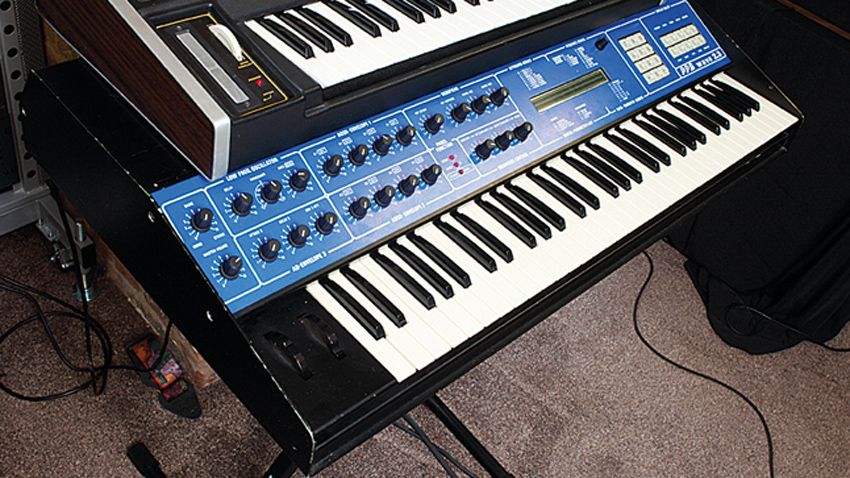
How much should I spend on a synthesizer?
When you’re looking to invest in one of the best synthesizers, you’ll likely have to make a few key decisions at the start of your buying journey. Clearly budget will play a part, but as we’ll show there are amazing synths to be found right across the board, with some truly epic compact beginner synth options coming in under £/$100. And, as hardware synths have grown in popularity, so too has manufacturers’ desire to find new and exciting ways of packing in extra functionality.
At the top end you will find synths which pack in more features and flexibility, either in the form of more voices, or effects, or with sequencing skills that can take your compositions off in all manner of strange directions. That’s part of what makes a hardware synth so much fun. You don’t always have to be ‘writing’ music, in the true sense of the word. Sometimes you can simply change a few parameters and see what happens. For creative, curious people there are few things that come close to the experience of playing a hardware synth.
You'll also find that the name on a synth will have an impact on its price. The top-end models from the likes of Moog, Sequential and Oberheim can run to thousands of dollars. Bear in mind that these are luxury items, though, and are likely to hold their value much better than budget synthesizers.
As with any genre of music, or music technology, there are trends which come and go. FM, for example, seems to have undergone a renaissance recently, while digital synths offering wavetable functionality greatly expands the tonal palette you have to play with. Don’t rule out digital or hybrid models either; while true analogue synths do still hold a special place in people’s hearts, modern hybrid synths delivering the sound of analogue with the flexibility of a digital engine offer the best of both worlds.
Ultimately, you’ll know the sound you’re looking for but don’t rule out the possibility that a good hardware synth might just spark something and take your creativity off in a different direction completely. And that is exactly why we love them.
What is the best synth to start with?
Synths can be incredibly complicated, so we recommend your start with something like the Korg Minilogue XD which has a good selection of self-explanatory knobs and switches, while still having plenty of depth to dive into once you get up to speed.
How we test
Synthesizers are obviously many and varied but they do have several key qualities, the most important being their sound and what you can do with it – and indeed how simple this is in operation. The sound of all synthesizers is defined by their sonic architecture and a very good indication of what this can deliver will be demonstrated via their presets. These are obviously a good place to start when testing a synth, and how varied and useful these are will define a synth's overall character.
How you can alter presets or create your own sounds with a synth's hands-on controls is the next big consideration; synthesizing a sound is what synths are designed to do so how easy this is to do is obviously very important. We look at this in terms of the signal flow and then the number of controls you get or whether you have to navigate through layers of menus to make parameter changes. The more hands-on and easy it is to make dramatic sonic changes, generally the better.
Then there are extra sonic exploration features like modulation. This is super important in terms of sonic flexibility and is largely about how many parameters on your synth can be modulated by other parameters – your mod wheel, LFOs and more – so you can shape the sound further and perhaps introduce more movement into your sound.
Then there are other sometimes optional but very useful features like an arpeggiator (where multiple note patterns can be triggered with a single note press), a sequencer (where defined note patterns can be programmed) or effects. Effects are very useful to add instant atmosphere (reverb), delays, thickening chorus, distortion and more to a sound, very often changing it as much as any on-board synthesizing options.
Overall ease of use can be tested with all of these factors, but it is the sonic flexibility – how deep, high, dynamic and dramatic a synthesiser can sound – which is perhaps the key overall impression any synth can make.
Read more about how we test music making gear and services at MusicRadar.
Related buyer's guides
MusicRadar's got your back
- The best cheap synthesizers for smaller budgets
- The best high-end hardware synthesizers
- Hardware vs software synths: which is better?
- Cover your gear with our guide to musician's insurance
Want all the hottest music and gear news, reviews, deals, features and more, direct to your inbox? Sign up here.
Andy has been writing about music production and technology for 30 years having started out on Music Technology magazine back in 1992. He has edited the magazines Future Music, Keyboard Review, MusicTech and Computer Music, which he helped launch back in 1998. He owns way too many synthesizers.
- Matt McCrackenJunior Deals Writer
- Ben RogersonDeputy Editor
- Chris Corfield
